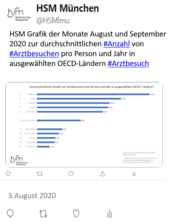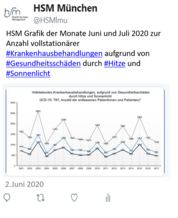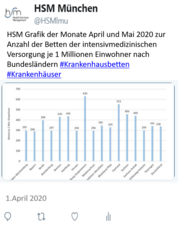The impact of office-based care on hospitalizations for ACSC
| Autoren/Herausgeber: |
Sundmacher, L. Kopetsch, T. |
|---|---|
| Erschienen: | 2015 |
| Publikationsart: | Articles in Refereed Journals (International) |
| ISBN/ISSN: | 1618-7601 |
| erschienen in: | European Journal of Health Economics |
| Weitere Quellenangabe: | Volume 16, Issue 4, pp 365-375 |
Abstract
Objective
The aim of the study was to quantify the impact of specific medical services in the ambulatory sector (SA) on hospitalizations for ambulatory care sensitive conditions (ACSCs), in order to be able to assess whether and under what conditions specific ambulatory treatments could serve to lower the hospitalization rate.
Data source
The analysis is based on administrative data showing the complete provision of medical services in the ambulatory sector in Germany and data from other sources. The data were provided by the National Association of Statutory Health Insurance Physicians, the Federal Statistical Agency, the Federal Office of Construction and Regional Planning, and the Federal Insurance Agency.
Study design
The impact of an increase in specific medical services on hospitalizations for ACSCs was estimated using linear spatial models at the level of the 413 German counties and county boroughs for the years 2007 and 2008. To allow for an undistorted estimation of the coefficients, SA and physician density were instrumented using a two-stage ‘least squares’ approach. The SA and the rate of hospitalizations for ACSCs were age-standardized. In the models, a well-defined set of covariates was controlled for.
Principal findings
According to the models, an additional € spent on ACSC treatment decreases the rate of hospitalizations for ACSCs for women and men up to an annual Uniform Value Scale For Doctors’ Fees point value of approximately 6,891 and 5,735, respectively. The correlation is not linear but, as suspected, exhibits diminishing marginal returns.
Conclusions
Our models suggest that additional medical services reduce the rate of hospitalizations for ACSCs but that this correlation depends on the absolute level of office-based services in a county, all covariates being held equal. Ceteris paribus counties with a very high volume of services exhibit ‘flat-of-the-curve medicine’, while counties with a very low current level of specific medical services benefit most from an increase in those specific services.





